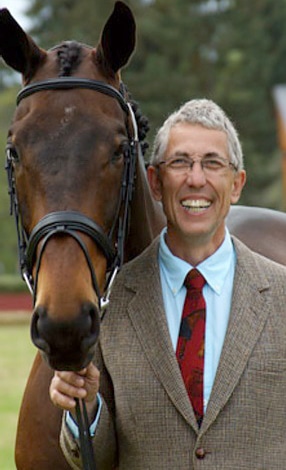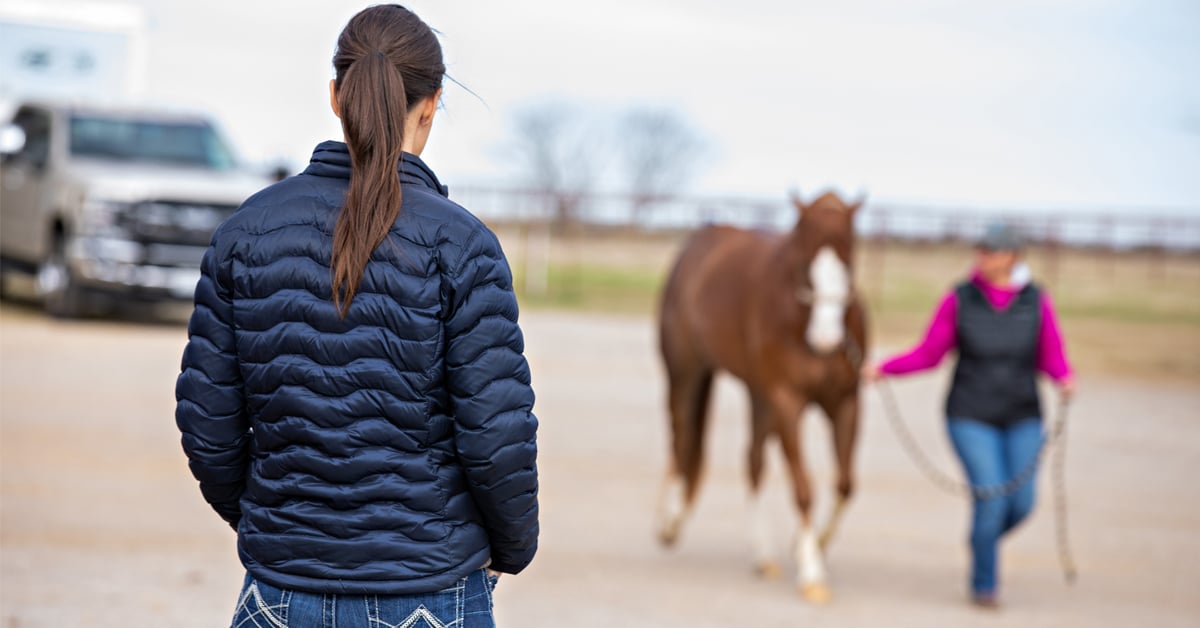Often characterized by quivering of the hind limbs during backwards movement, shivers is the name of a progressive neuromuscular condition that is hard to diagnosis and has no treatment.
How common is this chronic condition that alarmingly has no known cause, treatment, or cure? “I see about two cases per year in my lameness practice, which equates to about 86 during my lifetime as a veterinarian,” says Langley, BC-based veterinarian Dr. Nick Kleider, whose specialty is equine sports medicine and rehabilitation. Dr. Kleider was certified by the International Society of Equine Locomotor Pathology in 2012 – the first Canadian to receive the ISELP certification.

Dr. Nick Kleider, who was short listed to the 1974 Canadian Eventing Team and has trained and competed horses up to the advanced level.
Although the cause is unknown, Kleider explains that researchers suspect a genetic component may play a factor, as it occurs predominantly in draft horses and warmbloods, although occasionally affecting other breeds like Thoroughbreds and Quarter horses. “It appears to be the result of a defect in the deep cerebellar nuclei of the brain where selective purkinje cells undergo axonal degeneration,” he explains. “The inhibitors to the muscles are not functioning – no ‘off switch’ so to speak.”
Research indicates that most horses don’t show signs until four years of age or older, and that most horses diagnosed with shivers are stallions or geldings over 16.3 hh.
The difficulty in diagnosing the condition stems in large part from the fact that most horses show no signs of shivers at the walk or trot, explains Dr. Kleider. “Affected horses often show hyperflexion or hyperextension of one or both hind limbs when asked to back up. What we see with hyperflexion is the horse raises one hind limb up and away from the body in a spastic, trembling motion for several seconds or longer. With hyperextension, the horse places the hind feet further back than normal when backing up. The stifle and hock joints become hyperextended and are held rigid and spastic. Mild to extreme trembling of the muscles of the hindquarters may also occur, especially in advanced cases. In my personal experience I found many of these horses become reluctant to raise their hind feet for getting their feet picked out or for the farrier to trim or shoe, and many are reluctant to back up.”
There is little commonly understood about shivers, with several other conditions closely mirroring the symptoms. The difficulties in diagnosing shivers mean that there is a chance it slips through the cracks on a pre-purchase exam. “Mild forms of anything can be missed on a pre-purchase exam, and as everyone knows, horses vary incredibly from day-to-day in their signs and symptoms,” say Kleider.

Often the most pronounced sign of shivers can be seen when the horse is asked to back up, such as off a trailer. (Pam Mackenzie photo)
“Generally, if the horse is backed up during a pre-purchase exam it may become obvious and also it may become more apparent when lifting the hind feet for the flexion tests.”
Dr. Kleider further explains that shivers can be confused with or overlap other diseases such as stringhalt, upward fixation of the patella, equine motor neuron disease, equine protozoal Myeloencephalitis (EPM) and polysaccharide storage myopathy (PSSM ); and that many horses can suffer from PSSM and shivers concurrently.
With so much grey area surrounding the condition, Kleider encourages owners concerned about shivers have their horse examined by a vet and have the horse backed and flexed.
Frustratingly, treatment of shivers is difficult because there is none, explains Kleider. He notes that some horses do seem to respond to high levels of vitamin E in the diet, and that studies show over 50 per cent of horses with shivers improved with continued training and regular activity. It does seem to be beneficial to many of these horses to mildly sedate them with an anxiolytic during non-competition stressful situations where they are required to lift their legs – most notably shoeing.
Overall, he notes shivers need not be career-ending diagnosis. “In my experience, many cases are only slowly progressive over many years, which means these horses can remain functional for a significant portion of their younger lives. The 1.6 meter horse may drop to the 1.3 meter division, but can still perform.”
(Video of a three-year-old Gelderlander with shivers:)

